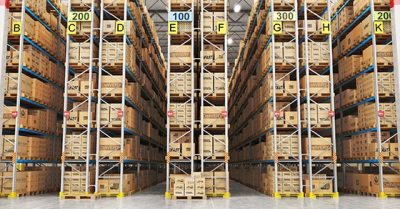
Pierre Liguori, Director of the supply chain consultancy firm, Tokema International, describes the expected changes for the warehousing market with the emergence of “Industry 4.0” and “Supply Chain 4.0”.
SITL 2018 in Paris – Salon International du Transport et de la Logistique – emphasized this year a strong market trend of automation in the warehouse. Multimodal 2018 in Birmingham will certainly follow the same trend: there is a growing demand to generate space savings and improve productivity in distribution centres in order to accommodate a faster and shorter – a more flexible – supply chain and automation is one of the option to achieve such goals.
But this trend of more autonomous warehouses that include automation and artificial intelligence is the emerged part of the iceberg only: Industry 4.0. and Supply Chain 4.0. are completely changing the traditional warehousing market landscape.
A revolution is coming for the warehouse…and for warehouse operators.
Ever-changing business models and markets, new sales strategies, growing unpredictable customer demand and product shorter life cycles demand more flexible solutions to increase customer satisfaction: the challenge is to put customers at the centre of changes to the value chain.
What does it mean for the warehouse?
Automation and robotics will definitely increase with more autonomous technology and high-velocity operations with integrated WMS using real time data. Warehouse operators who would not be ready or able to invest in new technologies, higher skilled staff and transformation projects may simply disappear in a near future.
Real-time data management also raise the challenge of integrating the digital and the physical in the warehouse as perfectly described in an interesting report issued by Deloitte University Press: real-time sharing of information between all supply chain stakeholders is enabled by Industry 4.0. technologies allowing companies to enhance supply chain planning and optimising their distribution networks with a better lead time and volume allocation for short-term and mid-term delivery windows.
It means inventories shall be closer to customers and collaborative load and route planning shall be better scheduled to optimise transportation and warehousing networks and reduce operating costs. It will be enabled by digitisation and real-time connectivity.
Distribution centres strategies will therefore change with higher standardisation of logistics buildings: on one hand, fulfilment centres – wide storage space including flexible automation solutions in order to consolidate inbound flows – and on the other hand last mile delivery warehouses – smaller but closer to end customers to support urban deliveries.
The main expected change is the development of temporary warehousing solutions: as customer demand is more difficult to predict and because of product shorter life cycles, more flexibility is expected from companies’ supply chain to anticipate and follow market fluctuations.
As manufacturers and retailers want to put inventories closer to their customers, connected and collaborative warehousing networks shall be developed to better use and share existing warehousing capacities. It means 3PL’s have a unique opportunity to develop more multi-user warehouses with short term lease agreements signed with their customers but connected to a collaborative international network of warehouses.
Warehouse on Demand – WaaS – seems then to become a realistic concept as it shall increase the space utilisation ratio and offer greater flexibility to adjust companies supply chains to market fluctuations and ever-changing sales strategies.
3PL’s main challenge is therefore to move from a traditional model – sell space with standard 3/6/9 contract durations – to a more collaborative approach – creating a flexible model of interconnected WaaS.
This is huge change that should not be underestimated: it requires major cultural changes for 3PL’s – especially medium-sized ones – to become more collaborative, transparent and adapt their traditional business model to Supply Chain 4.0.
However, the financial argument could be a very good incentive to change: according to a JLL study – March 2018 – the actual warehouse space usage ratio in France accounts for 79.7%, around 211 million euro per year currently not compensated by any customer revenue. Other countries are certainly in similar situations.
The warehouse revolution is on. It is time for 3PL’s to embrace the changes of this new brave world…or disappear.


